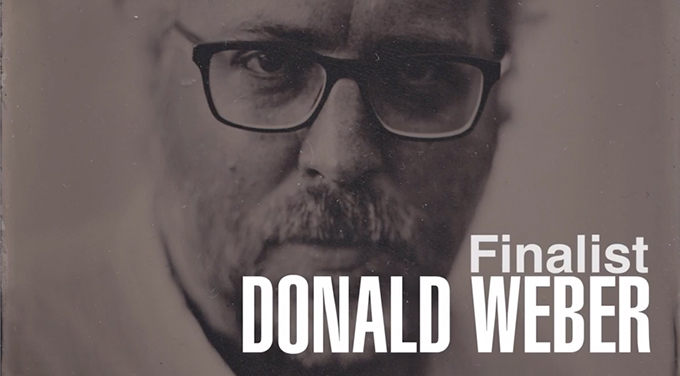
Donald Weber was a finalist for the 2014 Scotiabank Photography Award. A huge honour and well deserved recognition. Congratulations Don!
Watch the video of Donald talking about his work.
Canadian Art Critic and Writer Sarah Milroy nominated Donald for the Award.
Donald Weber
Nominator’s StatementDocumentary photography is a calling that entails all the aesthetic discrimination, technical expertise, and sophisticated reading of the world demanded of artists working in the fine art tradition. Added to this, however, is the added pressure of making pictures out in the world, often under conditions of threat. It’s a dance with fate: the operations of chance, of light judged on the fly, the threat of equipment failure, the chance nature of human encounter and connection, the sometimes steep requirements for personal courage, and the need for instinct that can never be quantified or explained — all must be summoned in the moment.
Donald Weber, now 40, is one of Canada’s most compelling practitioners in the field of documentary photography, a tradition too seldom honored in Canadian art. His insightful and piercing images of life in Russia and Eastern Europe have lifted the veil on a part of the world little known and understood in the west, his images powerfully bearing forth the vitality, violence and grim subsistence of a people burdened by the weight of a traumatic history, and stranded in a purgatorial present. Whether photographing the snow swept aftermath of Stalin’s purges, or the now-stilled landscapes of the western Ukraine and Siberia that were once the site of political atrocities, Weber captures the eeriness of a present haunted by the past. As we see in the faces of his urban denizens, gang members, and marauding police, the use of force has become a way of life, grimly accepted by its victims and exalted by its perpetrators.
In a similar vein, Weber has explored the vestigial curse of environmental disaster. In the long shadow of Chernobyl, he pursued connection with the human beings left in the wake of the 1986 explosion, either as survivors of the medical afflictions caused by radiation, or as scavengers reduced to rubbish picking in closed contamination areas. (More recently, he has documented the aftermath of the Fukushima explosion.) The sense prevails of people as subject to historical forces beyond their control, whether he is photographing a child living in the Chernobyl exclusion zone or an Inuk negotiating his abrupt cultural transition into the digital 21st century. Through Weber’s lens, poverty, the forces of oppression and the machinations of power are seen to grind the human subject in their gears.
In this regard, his most recent series of photographs, titled War Sand, serves as a solemn coda. The sands of the Normandy beaches are said to be eight percent shrapnel, metal exploded in combat and then corroded by time and the constant ministrations of the ocean tides. Added to this is its grim corollary: a portion of human remains, bone that has been crushed and crumbled to near powder-like consistency. Through the use of microscopic photography and with a kind of forensic inquisitiveness and existential wondering, Weber brings us close to these fragments, offering us, too, the longer view: the eerie hush of the beachhead and the expressionless features of the sea and sky, edged in grasses. The series invites a contemplation of the endless quiet that lies beyond the flare of bold historical events, offering a cautionary tale of the hubris of humankind.
– Sarah Milroy
